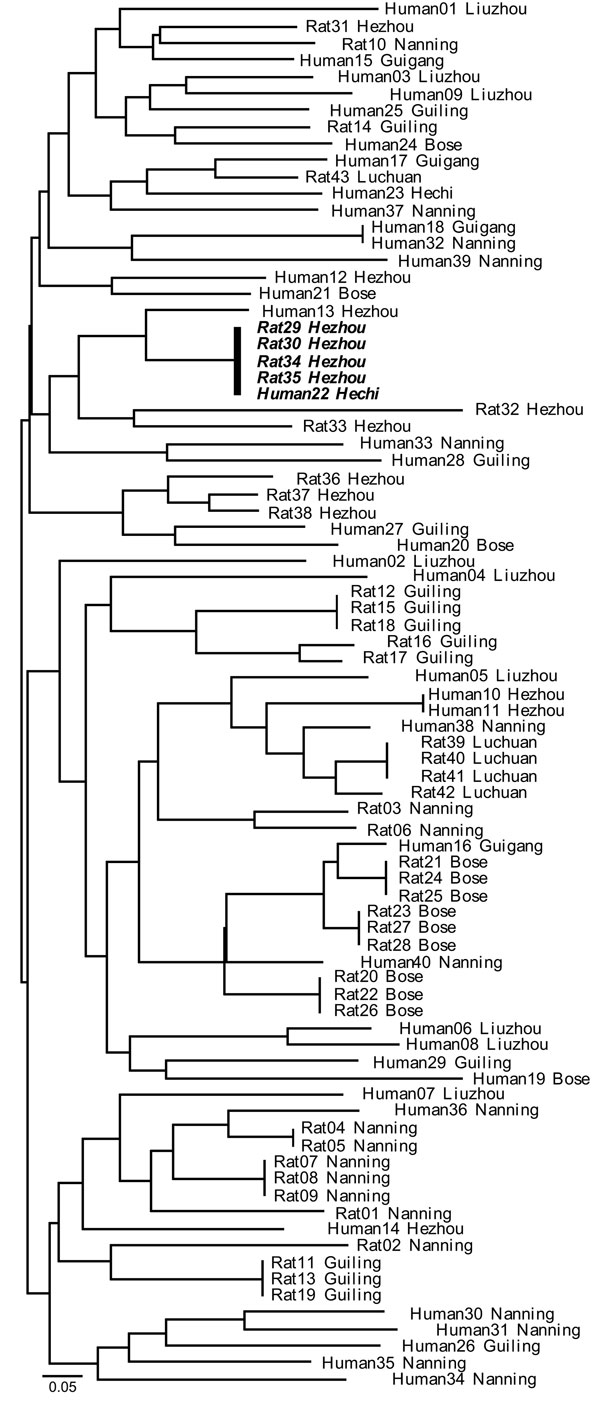Volume 17, Number 2—February 2011
Research
Common Reservoirs for Penicillium marneffei Infection in Humans and Rodents, China
Figure 2

Figure 2. Neighbor-joining tree of the relationship between multilocus microsatellite type genotypes of human and bamboo rat associated Penicillium marneffei isolates, Guangxi Province, People’s Republic of China. Identical genotypes shared between humans and rats are in boldface. Scale bar indicates nucleotide substitutions per site.
Page created: July 08, 2011
Page updated: July 08, 2011
Page reviewed: July 08, 2011
The conclusions, findings, and opinions expressed by authors contributing to this journal do not necessarily reflect the official position of the U.S. Department of Health and Human Services, the Public Health Service, the Centers for Disease Control and Prevention, or the authors' affiliated institutions. Use of trade names is for identification only and does not imply endorsement by any of the groups named above.